Search the Blog
Categories
- Books & Reading
- Broadband Buzz
- Census
- Education & Training
- Friday Reads
- General
- Grants
- Information Resources
- Library Management
- Nebraska Center for the Book
- Nebraska Libraries on the Web
- Nebraska Memories
- Now hiring @ your library
- Preservation
- Pretty Sweet Tech
- Programming
- Public Library Boards of Trustees
- Public Relations
- Talking Book & Braille Service (TBBS)
- Technology
- Uncategorized
- What's Up Doc / Govdocs
- Youth Services
Archives
Subscribe
Category Archives: Uncategorized
Free Nebraska Statehood 150 Event!
 Salute to the Good Life : A Gala Tribute to Nebraska’s History, Culture and Military Personnel
Salute to the Good Life : A Gala Tribute to Nebraska’s History, Culture and Military Personnel
Friday, September 22
4:00 PM – 10:30 PM
Centennial Mall South | Lincoln
Free Admission | Family Friendly
Festival Seating | Bring Your Own Lawn Chairs or Blankets
Food Trucks| Laser Light Show | Fireworks | Remembering our Fallen Memorial | Emceed By Broadcast House
Schedule:
Truckin’ Through Nebraska | A Mobile Children’s Museum
Open 3:00-7:00 p.m.
Food Trucks
3:00-11:00 p.m.
Nebraska National Guard Band
4:00-4:45 p.m.
Josh Hoyer
5:00-6:00 p.m.
The Back 40
6:15-7:30 p.m.
Kris Lager Band
7:45-8:45 p.m.
Laser Light Show
8:45-9:05 p.m.
Kris Lager Band
9:10-10:10 p.m.
Fireworks Finale
10:10-10:30 p.m.
Free Webinar! Beyond Books: Public Libraries Address the Social Determinants of Health
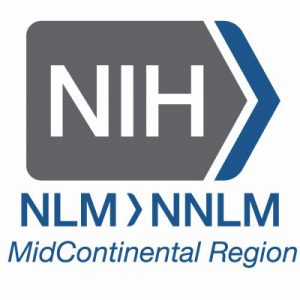 Beyond Books: Public libraries address the social determinants of health Breezing Along with the RML from NNLM MCR
Beyond Books: Public libraries address the social determinants of health Breezing Along with the RML from NNLM MCR
September 20, 2017 10am MT/11am CT
Join Anna Morgan from the Healthy Library Initiative as she discusses public libraries, their influence on social determinants of health, and their importance for community well-being. The Healthy Library Initiative has worked with Philadelphia area public libraries in identifying how the libraries address social determinants of health and how they can build on those programs. To read more about Healthy Library Initiative and what they do, visit http://www.healthylibrary.org/.
Presenter
Anna Uma Morgan, MD, MSc, MSHP is a general internist and recently completed the Robert Wood Johnson Clinical Scholars at the University of Pennsylvania. Dr. Morgan’s work is focused on community-based interventions for addressing the social determinants of health. As a clinical scholar, she worked primarily with the Healthy Library Initiative, a partnership between Penn and the Free Library of Philadelphia aimed at harnessing the power of public libraries to improve population health. She continues to practice primary care in underserved populations.
Questions? Contact:
Annette Parde-Maass
Education and Outreach Coordinator
National Network of Libraries of Medicine | MidContinental Region
Creighton University Health Sciences Library
AnnetteParde-Maass@creighton.edu
402.280.4156
Free Webinar! Libraries Transform: Health Literacy Toolkit
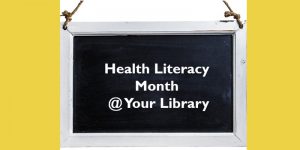 Libraries Transform: Health Literacy Toolkit
Libraries Transform: Health Literacy Toolkit
Date: September 14, 2017
Time: 12-1pm MT/1-2pm CT
Description: October is Health Literacy Month. The American Library Association (ALA) and the National Network of Libraries of Medicine (NNLM) have created a Health Literacy Month toolkit for the Libraries Transform campaign. Join Amanda J. Wilson (NNLM) and Jeff Julian (ALA) as they discuss NNLM’s mission to support health literacy efforts in libraries and explain how to use the key messages, data, and marketing materials to promote health literacy at your library.
1 MLA CE is offered for this session
Annette Parde-Maass
Education and Outreach Coordinator
National Network of Libraries of Medicine | MidContinental Region
Creighton University Health Sciences Library
AnnetteParde-Maass@creighton.edu
402.280.4156
What’s Up Doc? New State Agency Publications at the Nebraska Library Commission
New state agency publications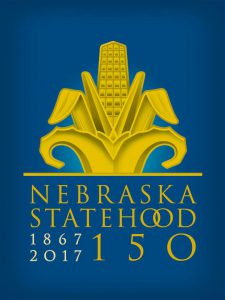 have been received at the Nebraska Library Commission for July 2017. Included are reports from the Nebraska Department of Agriculture, the Nebraska State Board of Health, the Nebraska Department of Motor Vehicles, and new books from the University of Nebraska Press, to name a few.
have been received at the Nebraska Library Commission for July 2017. Included are reports from the Nebraska Department of Agriculture, the Nebraska State Board of Health, the Nebraska Department of Motor Vehicles, and new books from the University of Nebraska Press, to name a few.
All items, except the books from the University of Nebraska Press, and the Local Emergency Operations Plans, are available for immediate viewing and printing by clicking on the highlighted .pdf link.
Friday Reads: Raven Rock
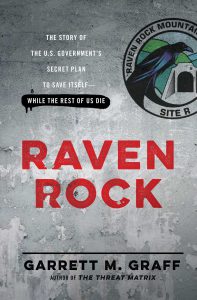 I had high expectations for Raven Rock: The Story of the U.S. Government’s Secret Plan to Save Itself—While the Rest of Us Die. I became interested in the book after listening to an engaging interview with the author, Garrett Graff, on NPR’s Fresh Air. Unfortunately, the book didn’t live up to my expectations. Don’t get me wrong, there is some good stuff here. But generally I found the middle part of the book to be a repetitive bore. Raven Rock picks up during World War II, when the U.S. was heading full throttle into the atomic age, with Harry S. Truman President of the United States. While there are many facets to Raven Rock, Graff primarily describes the aftermath of the atomic bomb deployment prior to the cold war, subsequent U.S. government preparations for doomsday, and other disaster planning. The book provides a chronology by each president after Truman. I found the first few chapters to be of interest (Truman and Eisenhower), then the beginning of aforementioned lackluster, drawn out, and sleepy sections, then heating up again around September 11, 2001 (Bush 43).
I had high expectations for Raven Rock: The Story of the U.S. Government’s Secret Plan to Save Itself—While the Rest of Us Die. I became interested in the book after listening to an engaging interview with the author, Garrett Graff, on NPR’s Fresh Air. Unfortunately, the book didn’t live up to my expectations. Don’t get me wrong, there is some good stuff here. But generally I found the middle part of the book to be a repetitive bore. Raven Rock picks up during World War II, when the U.S. was heading full throttle into the atomic age, with Harry S. Truman President of the United States. While there are many facets to Raven Rock, Graff primarily describes the aftermath of the atomic bomb deployment prior to the cold war, subsequent U.S. government preparations for doomsday, and other disaster planning. The book provides a chronology by each president after Truman. I found the first few chapters to be of interest (Truman and Eisenhower), then the beginning of aforementioned lackluster, drawn out, and sleepy sections, then heating up again around September 11, 2001 (Bush 43).
I think one of the challenges for Graff was getting his hands on information that wasn’t classified. This might explain why the reader has chapter after chapter devoted to the 50’s and 60’s time period, yet less than 2 pages devoted to President Clinton. Raven Rock, named after the massive Raven Rock Mountain Complex (also known as Site R), is an underground military nuclear bunker carved into the area’s greenstone granite, and located about 6 miles north of Camp David. It is basically an underground city, complete with offices, communications centers, bomb blast doors, dining facilities, an infirmary, bathrooms, etc. Speaking of Camp David, Graff provides an interesting narrative about the history of it (formerly known as Shangri-La). One of the appealing aspects of Raven Rock is these sorts of anecdotes, and I wish Graff devoted more attention to them. A few highlights include Graff’s descriptions of code names used for government officials and their family members, and the challenge to deciphering them on radio transmissions. Example: “Volunteer will reside at VALLEY for an indefinite time. I repeat: VOLUNTEER will reside at VALLEY for an indefinite time. VICTORIA requests that VENUS will go to VALLEY with agent” actually meant that Lyndon Johnson (VOLUNTEER) will reside at his private residence at The Elms (VALLEY), and Lady Bird (VICTORIA) requests that Luci (LBJ’s daughter, VENUS) will go to The Elms (VALLEY) with an agent. Also, the fact that up until at least 1910, tourists could sit at the president’s desk in the White House, and as Vice President, Lyndon Johnson’s phone number was listed in the phone book. Another anecdote describes a curious exchange between Chief Justice Earl Warren and officials who distributed a Mt. Weather entrance ID card to him but not Mrs. Warren. In our self-centered world of today, you have to appreciate the Chief’s returning the card, sarcastically saying:
“Then I suppose I should call my wife and say, ‘Honey, there is an atomic bomb attack to be made on Washington, and I am flying to safety in Appalachia. Sorry I don’t have time to come home and say good-bye, but it was nice to have met you.'”
Raven Rock is one of a number of emergency operations centers for the government, along with Mount Weather in Virginia, and Cheyenne Mountain in Colorado. But Graff’s Raven Rock is about much more than the construction and maintenance of these facilities; it’s about government disaster, succession, and “COG” or continuity of government planning — the principle that government continues to operate in the case of a catastrophic event. Granted most of this centers around the cold war, but on September 11, 2001, it took a much different turn. As Graff points out, September 11 exposed a clustered mess of communications problems and other assorted government disarray. Graff also devotes quite a bit of attention to the nuclear “football”. While the football doesn’t explicitly contain launch codes, “one military aide compared it to a Denny’s menu. You can go through and point at different pictures and that’s the type of nuclear war you would order. …”
All in all, Graff provides an interesting narrative of how the government’s plans have evolved over time to adequately handle these sorts of real and potential doomsday type disasters. Graff points out some of these failures along the way, but also interesting facts that most readers likely are unaware of. Just skip the middle third of the book.
New Public Library Toolkit for Consumer Health Information Resources
 The McGoogan Library of Medicine at University of Nebraska Medical Center has created a new Public Library Toolkit to support Nebraska public librarians in delivering consumer health information to their communities. The toolkit provides links to training resources for librarians, and state and local health statistics to help with program planning. It also provides websites for consumers that cover health and wellness, finding healthcare, financial assistance, and caregiver support.
The McGoogan Library of Medicine at University of Nebraska Medical Center has created a new Public Library Toolkit to support Nebraska public librarians in delivering consumer health information to their communities. The toolkit provides links to training resources for librarians, and state and local health statistics to help with program planning. It also provides websites for consumers that cover health and wellness, finding healthcare, financial assistance, and caregiver support.
McGoogan Library has been serving the consumer health information needs of Nebraska citizens for over 30 years. The library continues to seek opportunities to support and collaborate with public libraries. If you have feedback or suggestions for the toolkit, please contact Christian Minter, Community Engagement & Health Literacy Librarian at christian.minter@unmc.edu or 402-559-7226.
What’s Up Doc? New State Agency Publications at the Nebraska Library Commission
New state agency publications have been received at the Nebraska Library Commission for July 2017. Included are reports from the Nebraska Auditor of Public Accounts, annual reports and information guides from the Nebraska Game and Parks Commission, and new books from the University of Nebraska Press, to name a few.
have been received at the Nebraska Library Commission for July 2017. Included are reports from the Nebraska Auditor of Public Accounts, annual reports and information guides from the Nebraska Game and Parks Commission, and new books from the University of Nebraska Press, to name a few.
All items, except the books from the University of Nebraska Press, are available for immediate viewing and printing by clicking on the highlighted .pdf link.
Public Library Survey Tip No. 6
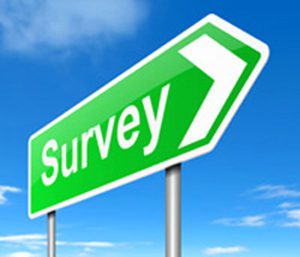 Today marks the end of the Bibliostat tip series. We will focus on the federal question of capturing and reporting the number of Wi-Fi sessions your library has in the reporting period (your fiscal year). The idea behind this is that communities may lack areas providing free Wi-Fi, and the local public library often fills that gap. The difficulty lies with how to accurately capture this data, especially in smaller libraries that lack full time IT tech support. Real time technical solutions do exist, but for most these aren’t practical. Today I’ll offer you a simple potential solution to more accurately capture a representative sample of who is using your Wi-Fi. As most of you know, data for the public library survey is sometimes estimated from captured data from an “average week”. In other words, you take a representative sample during a typical time period (e.g. for the number of library visitors you count everyone during a week in the spring, summer, fall, and winter) and then you do a bit of math to get the reported annual figures.
Today marks the end of the Bibliostat tip series. We will focus on the federal question of capturing and reporting the number of Wi-Fi sessions your library has in the reporting period (your fiscal year). The idea behind this is that communities may lack areas providing free Wi-Fi, and the local public library often fills that gap. The difficulty lies with how to accurately capture this data, especially in smaller libraries that lack full time IT tech support. Real time technical solutions do exist, but for most these aren’t practical. Today I’ll offer you a simple potential solution to more accurately capture a representative sample of who is using your Wi-Fi. As most of you know, data for the public library survey is sometimes estimated from captured data from an “average week”. In other words, you take a representative sample during a typical time period (e.g. for the number of library visitors you count everyone during a week in the spring, summer, fall, and winter) and then you do a bit of math to get the reported annual figures.
So the question really is how you more accurately get this sample for Wi-Fi uses? And what about the kids in the parking lot that are using your Wi-Fi? Some libraries have taken to following people around to see if they have a laptop, tablet, or smartphone, and then recording that data (called an “observation estimate”), but who really wants to do that (and it might be more than a bit creepy depending on the circumstances). So here is another option. If you have an android or apple device (e.g. smartphone) capturing these representative samples just got a little easier and a little more accurate, but it does take a bit of work during your sample time period. First, you need to get an app that tells you what devices are connected to your Wi-Fi at a particular point in time. You could search the App Store (Apple) or the Play Store (Android) at length for network scanners or terms such as who is using my Wi-Fi, but I’ll give you a couple of apps that are available for free and work fairly well. These are Fing and EZ Net Scan. In no way am I endorsing these over others; these are just two examples. You should try some out and see what might fit your needs. Downloading these apps offers you the ability, when you are connected to the library Wi-Fi, to see all the other devices that are connected to the same Wi-Fi network. So ideally you would start at a particular point in time, write down the IP addresses for the connected devices, and then re-scan every so often (say every 15-30 minutes) to see if any new devices are connected, or if a device drops connections. Once you collect the data during the sample time period, you just do your math to get an annual figure. Worst case scenario is that you capture data for a typical day and then multiply by the number of days in a year you are open. Better case is that you take a sample for a defined time period, such as a typical day during each of the four seasons (spring, summer, winter, and fall). Shaka.
Posted in General, Information Resources, Library Management, Uncategorized
Tagged Bibliostat, Public library survey
1 Comment
Public Library Survey Tip No. 5
 Shaka. There are two more installments in this series of Bibliostat tips, and both will focus on library technology. Today we will take a look at internet connections and speed. There are two relevant questions: (1) What is the type of your internet connection; and (2) What is your download speed. For the type of your connection, if you don’t know, you will need to ask your internet service provider (ISP) to confirm. These are things like DSL, Cable, Fiber Optic, Satellite, etc. The trickier part to the survey is reporting your download speed, because there are a variety of factors that could affect your speed test. There are a number of different websites and online tools to measure your speed, but we like to recommend the NDT (Network Diagnostic Tool). Completing a test is easy by going to this site and clicking on “Start Test”. After a few minutes, a report will kick out that will tell you what your download speed is. A few things to keep in mind: It’s best to do a test at various times during an “average day”. If you only do one test or test at the same time every day, you are not likely to get an accurate sample of your actual speed. Also, try and perform tests both from your Wi-Fi and over a wired connection, as there might be some variance between the two. When you do multiple tests, report the average speed.
Shaka. There are two more installments in this series of Bibliostat tips, and both will focus on library technology. Today we will take a look at internet connections and speed. There are two relevant questions: (1) What is the type of your internet connection; and (2) What is your download speed. For the type of your connection, if you don’t know, you will need to ask your internet service provider (ISP) to confirm. These are things like DSL, Cable, Fiber Optic, Satellite, etc. The trickier part to the survey is reporting your download speed, because there are a variety of factors that could affect your speed test. There are a number of different websites and online tools to measure your speed, but we like to recommend the NDT (Network Diagnostic Tool). Completing a test is easy by going to this site and clicking on “Start Test”. After a few minutes, a report will kick out that will tell you what your download speed is. A few things to keep in mind: It’s best to do a test at various times during an “average day”. If you only do one test or test at the same time every day, you are not likely to get an accurate sample of your actual speed. Also, try and perform tests both from your Wi-Fi and over a wired connection, as there might be some variance between the two. When you do multiple tests, report the average speed.
The takeaway from collecting this data on your end is that you have a more accurate picture of what speed you are offering compared to what you are actually paying for. Secondly, the speed tests might flag other network issues that you need to look into. For instance, if your wired speed is consistently 60 Mbps, and your Wi-Fi speed lags far behind that, then you might have issues that need to be investigated (such as your Wi-Fi router, it’s range, or some other issue). Finally, measuring your speed is helpful as a comparison tool; you can compare what your library offers compared to your peer libraries.
Posted in General, Library Management, Uncategorized
Tagged Bibliostat, Public library survey
Leave a comment
Public Library Survey Tip No. 4
 Shaka. Today’s public library survey data collection tip (part 4) takes a look at library collections and databases (or “electronic collections”). For those of you who subscribe to local databases or have vendors other than Nebraska OverDrive, this can be a difficult task. But if you only have Nebraska OverDrive here’s the good news: We pull the data for those holdings and circulations and prefill it on your survey. Recently, the survey has been redesigned so that for eBooks, Audiobooks, and downloadable video you only report current holdings. No more of that eBooks added and deleted business.
Shaka. Today’s public library survey data collection tip (part 4) takes a look at library collections and databases (or “electronic collections”). For those of you who subscribe to local databases or have vendors other than Nebraska OverDrive, this can be a difficult task. But if you only have Nebraska OverDrive here’s the good news: We pull the data for those holdings and circulations and prefill it on your survey. Recently, the survey has been redesigned so that for eBooks, Audiobooks, and downloadable video you only report current holdings. No more of that eBooks added and deleted business.
On the survey there are sections for reporting eBooks, Audiobooks, downloadable video titles, and databases/electronic collections. If you subscribe to a service or have a vendor other than Nebraska OverDrive, how do you determine where to report that service/vendor and the number of uses? It depends, but the key question here is: Do the items circulate for a set period, or are they permanently retained by the patron? If they circulate for a set period, then you report in two areas: (1) the library collections portion of the survey (under eBooks, Audiobooks, and downloadable video); and (2) the circulation portion of the survey (adult or children’s). Sometimes, vendors offer a package of items that the library does not select, and that are paid for based on their selection by the patron. For these, you report the number of times the item was selected by the patron, both as holdings and circulation. Sometimes it can be difficult to ascertain whether or not the circulation was children’s or adult. If in doubt, or it isn’t clear, we suggest reporting it under the adult category.
If items are permanently retained by the patron, count each vendor as one local database and report the number of uses (generally this would be a download or a stream in the case of audio or video). Finally, our survey is set up for databases as a repeating group, so we first ask how many total local databases you subscribe to, then we ask you to name each one and report the number of times it was used. To illustrate, say that you have 3 local databases (Example: Zinio, Freegal, and Mango Languages). You first enter the name of the first database (Zinio), and then enter the number of times it was used, then click on Save, then click Add Group to enter the next database (Freegal) and its number of uses.
Posted in General, Library Management, Uncategorized
Tagged Bibliostat, Public library survey
Leave a comment
Public Library Survey Tip No. 3
 Today we have part 3 in our public library survey data collection series. We will focus on expenditures. First off, for this survey you report what you actually spent in the listed categories. Most of the time, this is different than the amount that was budgeted. As such, your reported expenditures shouldn’t be nice round numbers, and should be at least slightly different than what you reported last year. A common issue that arises is the reporting of expenditures for employee benefits. The employee benefit expenditure includes things such as payments for health insurance and retirement, but also social security and FICA (Federal Insurance Contributions Act). This is a bit confusing because FICA typically includes both Social Security and Medicare. In the category, you need to report all of these payments, and the only way it can be a $0 is if you are paid as an independent contractor. If that’s the case, and rarely but sometimes it is, then enter “librarian is paid as an independent contractor” in the note field on the survey because this will undoubtedly come up on an edit check. A few other items of note about expenditures:
Today we have part 3 in our public library survey data collection series. We will focus on expenditures. First off, for this survey you report what you actually spent in the listed categories. Most of the time, this is different than the amount that was budgeted. As such, your reported expenditures shouldn’t be nice round numbers, and should be at least slightly different than what you reported last year. A common issue that arises is the reporting of expenditures for employee benefits. The employee benefit expenditure includes things such as payments for health insurance and retirement, but also social security and FICA (Federal Insurance Contributions Act). This is a bit confusing because FICA typically includes both Social Security and Medicare. In the category, you need to report all of these payments, and the only way it can be a $0 is if you are paid as an independent contractor. If that’s the case, and rarely but sometimes it is, then enter “librarian is paid as an independent contractor” in the note field on the survey because this will undoubtedly come up on an edit check. A few other items of note about expenditures:
- For library materials in electronic format, you report expenditures for eBooks, Audiobooks, e-serials (electronic journals), databases, electronic maps, downloadable videos, and pictures in electronic or digital format;
- Other materials expenditures includes physical items that aren’t books. These typically are DVD’s, CD’s, microfilm, and other things like cake pans, puzzles, games, puppets, toys, and art;
- Capital expenditures should match or come close to matching what you report in capital revenue. However, keep in mind that sometimes funds are allocated in the previous fiscal year, so the capital revenue was reported on last year’s survey even though the expenditure is reported on the current survey;
- Capital expenditures are “major one time projects”, and examples include: (a) site acquisitions; (b) new buildings; (c) additions to or renovation of library buildings; (d) furnishings, equipment, and initial book stock for new buildings, building additions, or building renovations; (e) library automation systems (initial purchase of); (f) new vehicles; and (g) other one-time major projects. Examples include new roofs, new carpet, new windows, sidewalks, etc.; and
- There sometimes is confusion about what to report as computer hardware, accessories, and software and “electronic access”. These are two different categories. For electronic access, you report maintenance or consortium fees association with your integrated library system or costs associated with accessing the internet. For the computer part (hardware, accessories, and software), you report items that are for both staff and public use.
Shaka.
Posted in General, Library Management, Uncategorized
Tagged Bibliostat, Public library survey
Leave a comment
What’s Up Doc? New State Agency Publications at the Nebraska Library Commission
New state agency publications have been received at the Nebraska Library Commission for June 2017. Included are Correctional Services reports, Economic Development reports, state Investments reports, and Workers’ Comp reports, to name a few.
have been received at the Nebraska Library Commission for June 2017. Included are Correctional Services reports, Economic Development reports, state Investments reports, and Workers’ Comp reports, to name a few.
Public Library Survey Tip No. 2
 Part 2 in our public library survey data collection series takes programming a step further, focusing specifically on children’s and young adult programs. Reporting these programs can be a bit tricky, mostly because of difficulty in determining which category to count the program. Taking into consideration the fact that some of these programs may overlap and actually draw persons from both the children’s and young adult age groups, you might need to make a determination of what category to put your program in based on the nature of the program. Specifically, what is the primary intended audience? Children (for purposes of this survey) are defined as persons age 11 and under. Young adults (for purposes of this survey) are defined as persons age 12 to 18. Here is your extended cheat sheet:
Part 2 in our public library survey data collection series takes programming a step further, focusing specifically on children’s and young adult programs. Reporting these programs can be a bit tricky, mostly because of difficulty in determining which category to count the program. Taking into consideration the fact that some of these programs may overlap and actually draw persons from both the children’s and young adult age groups, you might need to make a determination of what category to put your program in based on the nature of the program. Specifically, what is the primary intended audience? Children (for purposes of this survey) are defined as persons age 11 and under. Young adults (for purposes of this survey) are defined as persons age 12 to 18. Here is your extended cheat sheet:
- Story times and summer reading events should be counted as programs;
- Do NOT count library services that are provided on a one-on-one basis (such as computer assistance or one-on-one homework help);
- Count programs that the library either sponsors or co-sponsors;
- Count programs even if they are held off-site (not at the library);
- If a program is offered in a series, count each program in the series (e.g. if you have a discussion group that meets 6 times, that counts as 6 programs); and
- IMPORTANT: For children’s program attendance – “Include adults who attend programs intended primarily for children.” And: For young adults – “Please count all patrons that attend the young adult programs regardless of age.”
Shaka.
Posted in General, Library Management, Uncategorized
Tagged Bibliostat, Public library survey
Leave a comment
What’s New with National Network of Libraries of Medicine MidContinental Region
 First, A little about the NNLM:
First, A little about the NNLM:
The mission of the National Network of Libraries of Medicine (NNLM) is to advance the progress of medicine and improve the public health by providing all U.S. health professionals with equal access to biomedical information and improving the public’s access to information to enable them to make informed decisions about their health. The Program is coordinated by the National Library of Medicine (NLM) and carried out through a nationwide network of health science libraries and information centers. To better serve these network libraries, health professionals, and public, there are NNLM Coordinators throughout the country providing outreach, training, and assistance and promoting free, open, and reliable resources from NLM and other reputable institutions. The Coordinator for the NNLM MidContinental Region is Annette Parde-Maass, serving Nebraska and supporting the bigger MidContinental Region (MCR).
What’s new with NNLM MCR:
The National Network of Libraries of Medicine MidContinental Region (NNLM MCR) has introduced a number of new pieces this past year – new acronym (from NN/LM to NNLM), logos, website format, blog format, class registration system, webinar recordings on YouTube, cross-regional collaboration, twitter account, and even a staff change. As of July 1, Annette Parde-Maas will move to full-time Education and Outreach for NNLM MCR as Christian Minter transitions to a full-time position at UNMC’s McGoogan Library. Her focus will still include community outreach and you will likely still interact with her as she promotes UNMC’s Consumer Health Information Resource Service (CHIRS). While NNLM MCR will miss her, we are fortunate to continue to have her serving the state.
You might be wondering with all that change if anything has stayed the same. NNLM MCR still offers trainings, and it is easier than ever to sign up for sessions from other NNLM and NLM entities. For example, if you see an online course you want to take from the Greater Midwest Region (GMR), you can sign up for that. If you wish a course or webinar would be offered specifically for your institution and/or face-to-face in Nebraska, contact me. The Bringing Health Information to the Community (BHIC) blog may have a new look but the purpose is still the same. For member libraries, NNLM MCR offer various funding opportunities from Technology Improvement to Consumer Health and Disaster Information specializations certification. If you are not sure if your library is a member, check the Member Directory. If you were a member but need to renew, contact me for assistance. If you would like to join the network, check our Membership page. You can join as long you are providing health information through a library, information center, or other organization. Membership is free.
If you have questions, would like to schedule a training or site visit, or need a health information resource, please contact Annette Parde-Maass, and she will be happy to help:
Annette Parde-Maass,
NNLM MCR Education and Outreach Coordinator
AnnetteParde-Maass@creighton.edu, 402.280.4156
Save
Save
Public Library Survey Tip No. 1
 Today marks the start of a multi-part weekly series of tips for collecting data for your next public library survey using Bibliostat. Yes, I know, it seems like this survey just ended, and it did, but you should be collecting your data now for input into the next survey when the cycle begins this coming November. Keep in mind that the next survey covers the time period of your library’s fiscal year, which in most cases is either October 1 to September 30 OR July 1 to June 30. A few libraries have fiscal years that run from January 1 to December 31. A quick reminder about terminology: Bibliostat is the vendor that we use to collect the data, but the survey itself is the IMLS public library survey. Today’s post will focus on programs in general. Most of you know what a library program is, but to clarify what you count for a program on this survey, here is the definition:
Today marks the start of a multi-part weekly series of tips for collecting data for your next public library survey using Bibliostat. Yes, I know, it seems like this survey just ended, and it did, but you should be collecting your data now for input into the next survey when the cycle begins this coming November. Keep in mind that the next survey covers the time period of your library’s fiscal year, which in most cases is either October 1 to September 30 OR July 1 to June 30. A few libraries have fiscal years that run from January 1 to December 31. A quick reminder about terminology: Bibliostat is the vendor that we use to collect the data, but the survey itself is the IMLS public library survey. Today’s post will focus on programs in general. Most of you know what a library program is, but to clarify what you count for a program on this survey, here is the definition:
A program is any planned event which introduces the group attending to any of the broad range of library services or activities or which directly provides information to participants.
Now that is pretty broad, so here is your cheat sheet:
- Library tours can be counted as programs;
- Examples of some programs include film showings, lectures, story hours, English and citizenship classes, and book discussion groups;
- Do NOT count library services that are provided on a one-on-one basis (such as computer assistance or one-on-one homework help);
- Count programs that the library either sponsors or co-sponsors;
- Count programs even if they are held off-site (not at the library); and
- If a program is offered in a series, count each program in the series (e.g. if you have a discussion group that meets 6 times, that counts as 6 programs).
As always, if you have any questions about what to count or not count, feel free to let me know. Next week we will expand on the program counts to include specific children’s and young adult programs. One final note, if you might not have been counting some programs you should have been counting, and now you are, your count will likely increase from what was reported in the prior year’s survey. If this is the case, it might trigger an edit check in Bibliostat. This means that you will need to enter a note in the note field explaining the increase (or decrease). It is perfectly acceptable to put something in that field such as “we did not count programs held off site last year, and this year we did”. Shaka.
Posted in General, Information Resources, Library Management, Uncategorized
Tagged Bibliostat, Public library survey
Leave a comment
Solar Eclipse Resources Part Two: 54 Days and Counting…
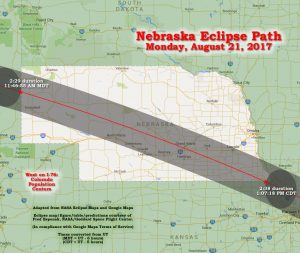 …or 7 weeks, 5 days, 23 hrs, and 14 mins, depending on when you read this of course!
…or 7 weeks, 5 days, 23 hrs, and 14 mins, depending on when you read this of course!
Is your library ready for the celestial event of the century? In 54 days, on August 21, 2017, the shadow of the moon will sweep across the United States from the Pacific Ocean to the Atlantic Ocean in a spectacle that hasn’t occurred in decades. In fact, the last total solar eclipse for the United States was nearly 40 years ago, and the next total eclipse that will be visible in the continental United States will be in 2024. Did you know that Nebraska will be one of the BEST places in the country to view it?
To help your library prepare for this historic event, the Nebraska Library Commission is doing a series of blog posts about resources you can access for your Eclipse programs:
Part 2: Educational Resources
Books & Articles: This section has a great eclipse bibliography for libraries, plus some of the best eclipse related books and articles available for download or purchase: The “All-American” Eclipse: A Guide for Public Libraries and Their Communities, When The Sun Goes Dark: A New, Richly-illustrated Children’s Book on the Science and Fun of Eclipses are just two suggested books available.
Eclipse Videos: In this section, you will find educational videos to educate your library patrons about the 2017 eclipse, courtesy of Exploratorium and Sky & Telescope (each of which has their own great resources). Examples of some of the videos: What is a Solar Eclipse (in English and Spanish), Earth-Sun-Moon Scale Model, and Getting to the 2017 Total Solar Eclipse.
 Eclipse Websites: There are a wide variety of really cool websites in this section! NASA, the National Science Teachers Association, the Fiske Planetarium, the Great American Eclipse, and STARnet to name just a few.
Eclipse Websites: There are a wide variety of really cool websites in this section! NASA, the National Science Teachers Association, the Fiske Planetarium, the Great American Eclipse, and STARnet to name just a few.
Have fun checking out all the resources available, and stay tuned next week for Solar Eclipse Resources Part Three!
Friday Reads: The Women in the Castle
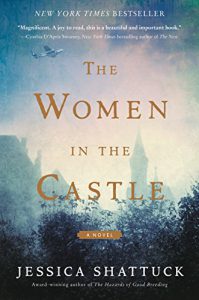 My favorite genre to read is historical fiction. I really enjoy learning something about history at the same time that I’m enjoying fiction. And occasionally, from within that genre, there comes along a book that makes the reader reconsider what they know about a certain period or event in history. The Women in the Castle, by Jessica Shattuck, is an excellent example. For all that we know and have heard about World War II and the Holocaust in Germany, there is much we haven’t heard about how the rest of the German population survived during and after the war. The Women in the Castle tells us part of that story:
My favorite genre to read is historical fiction. I really enjoy learning something about history at the same time that I’m enjoying fiction. And occasionally, from within that genre, there comes along a book that makes the reader reconsider what they know about a certain period or event in history. The Women in the Castle, by Jessica Shattuck, is an excellent example. For all that we know and have heard about World War II and the Holocaust in Germany, there is much we haven’t heard about how the rest of the German population survived during and after the war. The Women in the Castle tells us part of that story:
After Nazi Germany’s defeat, Marianne von Lingenfels returns as a widow to the castle of her husband’s ancestors, now fallen into ruin after long years of war. Along the way, she follows through on a promise she made to her husband and others of the resistance: to find and protect their wives, also widows like herself.
Marianne first rescues six-year-old Martin, the son of a resister, from a Nazi reeducation home. Together they make their way across war-torn Germany to Berlin, where they rescue Martin’s mother, Benita, from life as a prostitute to the Red Army. Then Marianne locates Ania, another resister’s wife, and her two boys, now refugees in one of the many displacement camps around the country.
As Marianne tries to create a family from the survivors of her husband’s resistance movement, she is certain their shared pain and circumstances will hold them together. But she quickly discovers that their previous lives, plus events that continue to bombard them as the country recovers, have complicated their perceptions with dark secrets that threaten to tear them apart. Eventually all three women must come to terms with the choices that they made before, during, and after the war – each with her own unique set of challenges.
If you enjoyed reading The Nightingale, Sarah’s Key, or The Light Between Oceans, you will definitely enjoy The Women in the Castle, by Jessica Shattuck.
Posted in Books & Reading, General, Information Resources, Programming, Uncategorized
Tagged Friday Reads
Leave a comment
Free July Health Information Continuing Education Classes from NNLM
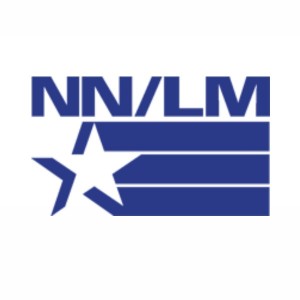 There are a wide variety of health information continuing education classes available during the month of July from the National Network of Libraries of Medicine:
There are a wide variety of health information continuing education classes available during the month of July from the National Network of Libraries of Medicine:
From Beyond Our Borders: Providing Multilingual and Multicultural Health Information
July 3, 2017 – July 31, 2017
This class is designed to assist librarians and others who work with diverse populations in locating health information. The resources presented are selected for their emphasis on providing culturally relevant information in the preferred language of the population. Background information on refugees and immigrants in the U.S. and their unique health issues will be presented. Provides 4 CE credits towards the Consumer Health Information Specialization. To register, visit: https://nnlm.gov/class/beyond-our-borders-providing-multilingual-and-multicultural-health-information/7323. Sponsored by NNLM Greater Midwest Region.
Making PubMed Work For You
July 10, 2017 – August 4, 2017
Are you looking to sharpen your PubMed searching skills? Then this course is for you! It will provide an overview of the system and demonstrate how to utilize PubMed features to search effectively. Topics will include automatic term mapping, search results, related articles, My NCBI, searching with MESH, journal searching, and single citation matcher. To register, visit: https://nnlm.gov/class/making-pubmed-work-you/7553. Sponsored by NNLM MidContinental Region.
Insider’s Guide to Accessing NLM Data: EDirect for PubMed
Mondays and Thursdays, July 10 – July 24, 2017, 11:00 am – 12:15 pm MT/ 12:00 – 1:15 pm CT
Students expected to attend all sessions.
This series of five hands-on, online workshops will introduce new users to the basics of using EDirect to access exactly the PubMed data you need, in the format you need. You will learn how to use EDirect commands in a Unix environment to access PubMed, design custom output formats, create basic data pipelines to get data quickly and efficiently, and develop simple strategies for solving real-world PubMed data-gathering challenges. To register, visit: https://nnlm.gov/classes/insiders-guide-accessing-nlm-data-edirect-pubmed. Sponsored by the National Library of Medicine.
Breezing Along with the RML: Mapping Your Customer’s Journey in the Library
Wednesday, July 19, 2017, 10 am MT/ 11am CT
A customer journey map provides a way to chart patrons’ experiences in using both physical and virtual library spaces. It helps tell the story of a person’s experience with your library from the first contact through the process of using services and resources. Journey mapping can be a great tool for any size library to recognize the needs and emotions of users, locate their “pain points” in interacting with your services, and identify potential solutions. In this webinar you will be given an overview of the topic, a brief guide to creating your own customer journey map, and additional resources to help you get started. To register, visit: https://nnlm.gov/class/mapping-your-customers-journey-library/7547. Sponsored by NNLM MidContinental Region.
NNLM Resource Picks: PubMed Health
Wednesday, July 26, 2017, 1 pm MT/ 2 pm CT
PubMed Health specializes in reviews of clinical effectiveness research and includes easy-to-read summaries for consumers. This session will provide a basic overview of PubMed Health and highlight new features that are coming. The guest speaker is Hilda Bastian from the National Library of Medicine. To register, visit: https://nnlm.gov/class/pubmed-health/280
Prescription for Success: Consumer Health on the Web
July 31, 2017 – August 28, 2017
This course provides an introduction to consumer health information and will cover concepts related to health literacy, the information-seeking behaviors of consumers, and the basics of MedlinePlus.gov, ClinicalTrials.gov and other reliable web pages. It will also cover sites devoted to pharmaceutical information for consumers, drug-interaction databases and herbal information. Provides 4 CE credits for the Consumer Health Information Specialization (CHIS). To register, visit: https://nnlm.gov/classes/prescription-success-consumer-health-web. Note: NNLM MCR offers funds to cover the cost of CHIS. See https://nnlm.gov/mcr/funding/mla-specializations-certification-funding for more information.
If you take any (or all) of the classes, be sure to submit your CE credits to the Nebraska Library Commission so they count towards your certification.
Holli Duggan | Continuing Education Coordinator | Nebraska Library Commission
If you have questions about the National Network of Libraries of Medicine, please contact:
AnnetteParde-Maass@creighton.edu | Education and Outreach Coordinator | National Network of Libraries of Medicine MidContinental Region
What’s Up Doc? New State Agency Publications at the Nebraska Library Commission
New state agency publications have been received at the Nebraska Library Commission for May 2017. Included are annual reports from various agencies, the Nebraska Commission for the Deaf and Hard of Hearing, the Nebraska Department of Economic Development, the Nebraska Clerk of the Legislature, and the Nebraska Office of Highway Safety, to name a few.
have been received at the Nebraska Library Commission for May 2017. Included are annual reports from various agencies, the Nebraska Commission for the Deaf and Hard of Hearing, the Nebraska Department of Economic Development, the Nebraska Clerk of the Legislature, and the Nebraska Office of Highway Safety, to name a few.
2016 Fiscal Year Data is Now Available
 The 2016 public library survey data is now available on the NLC website. This is preliminary data (meaning that it has not yet been certified by IMLS) so keep in mind that it might be subject to change. There is also a data dashboard that summarizes the data. Thanks to all of you who submitted your statistics. Historical data (back to 1999) is also available on our website. The next survey cycle begins in November, but you should be collecting those statistics now. If you are a new library director, check out the Bibliostat guide.
The 2016 public library survey data is now available on the NLC website. This is preliminary data (meaning that it has not yet been certified by IMLS) so keep in mind that it might be subject to change. There is also a data dashboard that summarizes the data. Thanks to all of you who submitted your statistics. Historical data (back to 1999) is also available on our website. The next survey cycle begins in November, but you should be collecting those statistics now. If you are a new library director, check out the Bibliostat guide.


